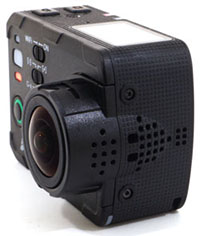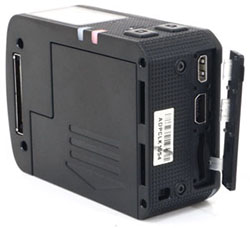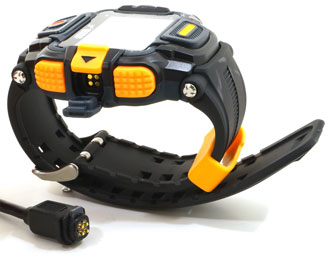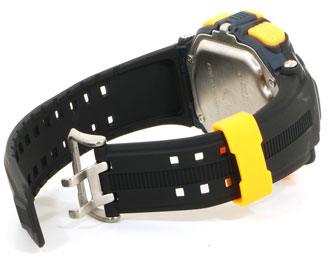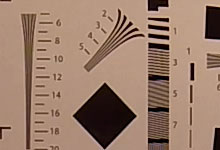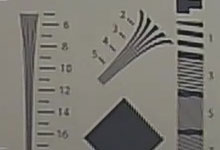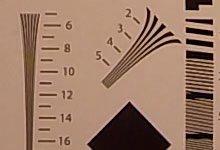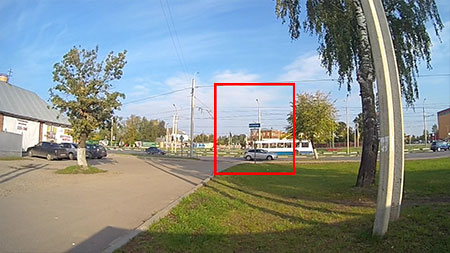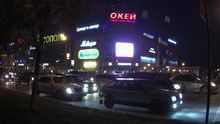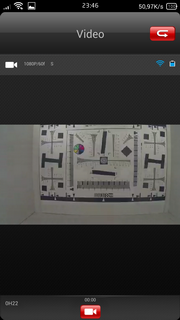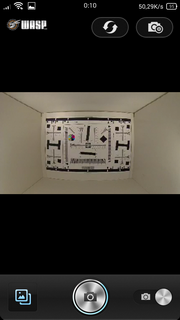Review of the AEE S70 action camera. Action cameras AEE Russia
Is there still no great review of the AEE s70 camera on BikePost? So we will quickly fix this now!
A short introduction: I bought the camera a year ago, a friend also suggested a discount, it came out in the budget range of less than five rubles, 10,000.
Now its average price is 18,000 rubles, but you can sleep with a producer and find cheaper options in non-brand stores.
For comparison, the poppy GoPro Xer o 3 cost 20,000 rubles at that time, with minimal equipment.
Chapter 1. Why AEE?
The idea came into my head to buy an action camera, because then I would be able to record my rides (who the hell is interested in them?), I would ride a motorcycle more often, and even to interesting places, to show people (seriously? Do you think this is will be able to tear my butt off the sofa?), will enlarge the famous organ by 5 cm, and in the kidneys, instead of stones, there will be diamonds!
That's what I thought.
The first thing I wanted when choosing a model was to get a Canon 3D with the size and weight of Matchbox, as durable as black boxes, as cheap as a Chinese soap dish, and would take good pictures even on a dark, moonless night. Or something close.
As a result, I identified two models: the poppy and expensive GoPro 3 (6.16 × 4.62mm 12MP matrix) and something similar AEEs70 (3.6 × 2.7mm 16MP matrix). In theory, it turns out that the AEE matrix is smaller in size, but has higher resolution than the branded GoPro! At the same time, AEE is 10,000 rubles cheaper, and the package is “well, who needs this GoPro?”! I also wanted a remote control, but it wasn’t included in the standard AEE package, sorry. Well, I chose it, found it in *Advertising censored*, got a discount, bought it (and put it on the shelf and forgot for six months).
This is how my acquaintance with the action camera began.
Chapter 2. Appearance.
The first thing that catches your eye is the packaging:
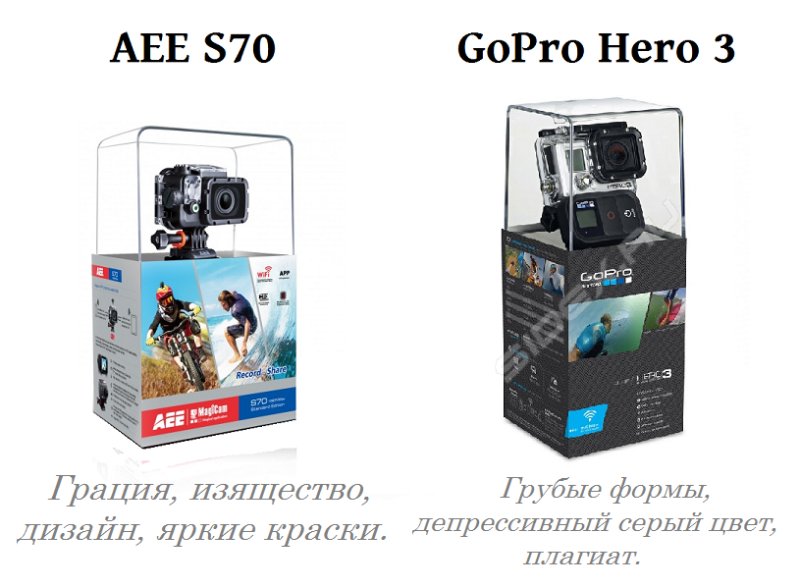
Having suffered in the process of opening the box, I brought out all the junk that was lying there, namely:

1. USB cable + power supply to the outlet;
2. Four installation platforms on adhesive tape (two straight and two bent);
3. Fastening to the platform with a lock;
4. Mount to the handlebar (for motorcycles that cannot vibrate);
5. Two-plane adapter-mount (increases the number of places where you can attach a camera by TWO-THREE TIMES!);
6. Camera platform with a lock (for mounting a camera without a protective case);
7. Waterproof housing;
8. Large strap (you can thread the helmet clasp through it, and then if the Velcro falls off, the camera will remain hanging on the strap, and will not break your heart on the merciless asphalt);
9. Small strap;
10. Reinforced plug for the case (for immersion under water. By default, a simple plug is screwed into the case, allowing water and sound to pass through);
11. Camera lens protection (small chance of saving the optics from falling to the ground if you use a camera without a housing);
12. The back cover to the body is large (if you inserted a camera with a screen into the body);
13. The back cover is small (if you use a camera in a body without a screen);
14. Panel with a screen and control buttons (quickly and conveniently configure the camera, watch the recorded video);
15. Actually, the camera itself.
The kit also included instructions, a textile bag with a belt loop for a belt, moisture-absorbing plates to prevent fogging, and a huge dose of joy from a new toy.
The design of the camera itself is very similar to the notorious GoPro - “Malevich’s Black Cube” with a lens and buttons and levers. This is where the similarities end and the differences begin:

There are 3 buttons on the camera itself: Record, Stop, Photo. In addition to the buttons, there are 4 switches on the front panel: Wi-Fi (you can connect to the camera from your phone, a good replacement for the remote control and screen for settings), exposure (the entire frame or center), motion sensor (records when the camera moves) and power off. The existence of these switches is a great benefit for the owner - to turn on Wi-Fi you don’t need to go into the camera settings, you just need to toggle the switch.
For serious settings - attach a module with a display and increase the number of buttons to 10! Is it necessary to say that with so many buttons on the camera you can play Tetris, if someone thinks of sewing it into the firmware?
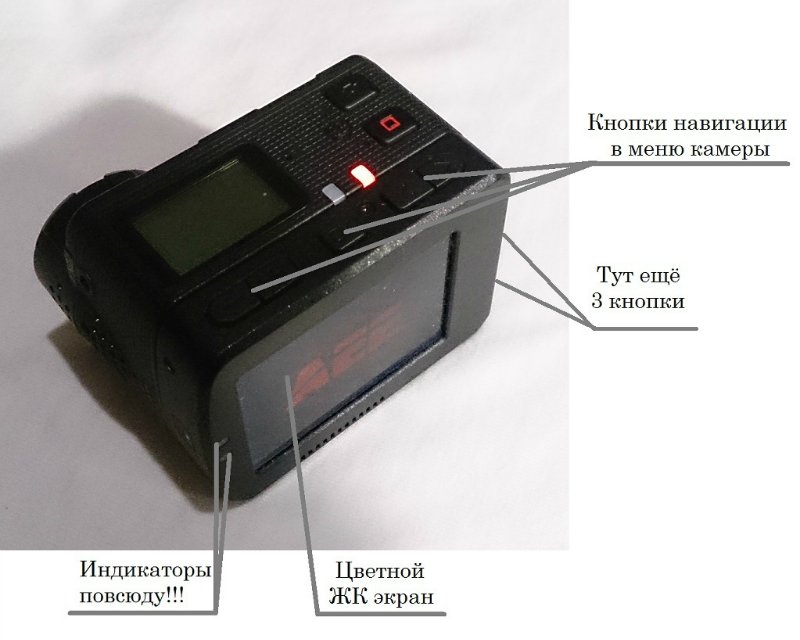

If you ride without a module with a display, then the necessary information about battery charge, recording format, etc. can be viewed on the small display on top.
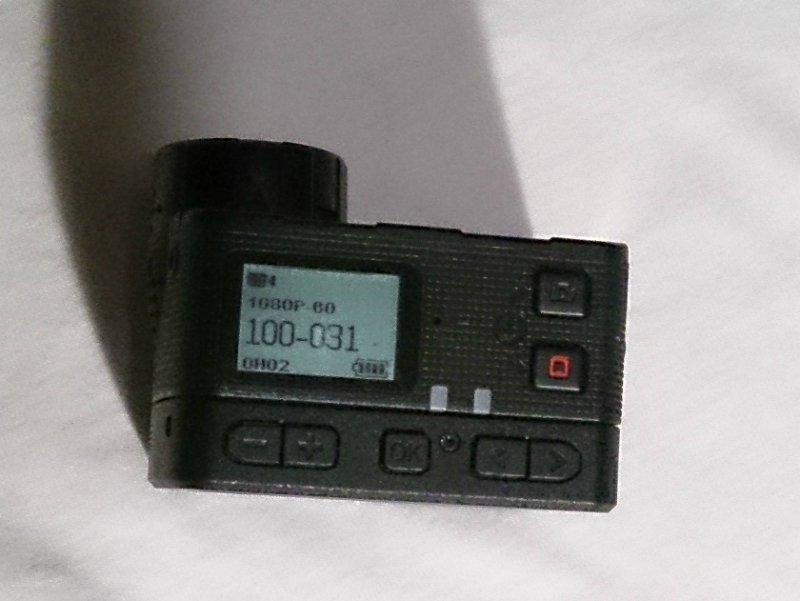
Also, for informational purposes, there are several (10 pieces) bright LEDs that blink when turned on, recording, low battery, etc., at such moments the camera looks like Christmas tree. In sunny weather they are not noticeable. They don’t rush so much that I didn’t notice them, even if I was watching them. At night in the apartment they hit my eyes, I had to turn them off (through the menu, no electrical tape was needed).
On the right side of the camera there are mini USB, HDMI ports and a slot for a microSD flash drive. By the way, the USB connector is located neatly near the housing plug. Therefore, by screwing the plug, you can power the camera directly in the body, even on a motorcycle (if you have USB power on the handlebars, and if not, then do it).

All 3 main camera buttons can be pressed through the protective case, but the switches and buttons of the additional panel with a screen are accessible only outside the case.
Chapter 3. Internalities.
Without delving into any technical details, I will inform you that the camera can record in the following formats: 1080p, 960p and 720p; frame rate from 24 to 120fps (depending on mode). The box says that the camera works for 2 hours in video recording mode, but I don’t believe it. They also write on the fences...
A 32GB flash drive is enough for 5 hours of video on minimum settings. I'm afraid the battery will give out sooner, so for long rides, connect the USB power to the steering wheel, and you will be happy. Or buy a second battery.
But the camera's capabilities don't end there! It can record only sound (who wants to fall asleep to the whistling wind and road noise?), or video without sound (more interesting, on high speeds I don’t hear anything except the whistling of the wind).
I also recently found out that this little devil has a cyclic recording function, which means it can work as a recorder. It is not possible to set the cycle; it records in separate videos for 10 minutes each, and as the memory fills up, old videos are deleted.
Camera viewing angle - 170%. It's a lot? U healthy person with two eyes the visual angle is 180 degrees. And if you are a one-eyed pirate, the camera will see more than you.
Chapter 4. Personal experience.
I didn’t dare to mount the camera on the top of my head, I liked it better stylish way stick to the chin of the helmet. So the streamlining of the helmet suffers less, and the motorcycle’s tidy is visible, and you can follow the camera.
The battery for recording in 1080p 60fps format and maximum quality lasted for 90 minutes.
The loop recording function works.
In 1080p 60fps format and maximum quality, a 32GB flash drive is enough for 140 minutes
Next, about the Velcro platform for the helmet. The bend on the platform is not large, so to increase the gluing area, I attached strips of double-sided foam-based adhesive tape along the edges of the Velcro. I cleaned and degreased the surface of the helmet in the chin area. I stuck it on, pressed it harder, held it there for 10 seconds to be sure, and it’s done. Visually, everything looks strong, although there are cracks where dust/dirt will fly in and accumulate over time. A year later (i.e. the other day) I removed this platform, warmed it up construction hairdryer carefully for 5-10 minutes to peel off. It was a success, but it was difficult, so the quality of the glue is more than reliable.
Light! Camera! Motor! Why can't I see anything???
During the first use, one problem became clear - in the sealed case the camera heats up, and after 10 minutes the glass of the case fogs up, due to which a 100% “blur” effect appears, which cannot be turned off.

The problem is solved in two ways:
1. Use moisture-absorbing plates (several pieces are included in the package);
2. Depressurize the housing (simply unscrew the plug).
I didn’t use the first method, because... Jewish roots again they didn’t let me use the records, which are scarce, and where else can I get them in a town with a population of about 40 thousand. - unknown. The second method worked great.
A little about pairing with your phone.
The camera has a WiFi point for connecting to a smartphone. It is turned on by a switch on the front side. On your phone, download the AEE app (available for Android and iOS). Next, turn on WiFi on your phone and look for a new access point “AEE”. The point under the password, the default password is written in the manual, you can change the password to your own through the computer by changing it in the system file in txt format.
If you don’t bother with the password, the connection will take a minute, after which you will be taken to the application menu:

Why do you need an application and what can it do?
1. Basic camera settings (video quality, etc.). The function is only useful if you ride without the “display with buttons” module.
2. Start/stop recording. If you want to take a photo, but there are no passers-by, put the camera on the motorcycle, move to a position and press the photo button through the camera. PROFIT!!!
3. Broadcast video from the camera. A useful thing if this is your first time attaching a camera to a helmet. and you can immediately see what the camera will shoot: only the sky, only asphalt with tidy, or you can set it to infinity horizon. In general, the usefulness of the thing is over9000!!!
4. Duplication of information from the camera display about the charge level, recording time, etc. Convenient if the camera is on the top of your head. If the camera is mounted on the chin, then the display is clearly visible.
Conclusion:
The camera works great, especially for the money. The equipment is rich, the functionality is wide, the size of 3.14 has not increased, but the girl has appeared. At the end there is an example of a recording:
Video
If you want to buy an AEE action camera in Russia, then our service will greatly facilitate your task. We have divided products into popular categories for quick search in Russia.
The catalog contains AEE action cameras of all price categories from the cheapest to the most expensive from various online stores in Russia. You can also read user reviews of the AEE action camera.
Products:
Display: yes; Black color; Weight: 116; Material: Plastic; Width: 59; Height: 43; Depth: 47; Case: yes; Type: Built-in battery; Type... Display: yes; Black color; Weight: 116; Material: Plastic; Width: 59; Height: 43; Depth: 47; Case: yes; Type: Built-in battery; Battery type: Li-Pol; Battery capacity: 1000; Display size: 2; Mini USB: yes; Mini HDMI: yes; Matrix resolution: 16; Max.
Delivery: from Moscow
Action camera. Full HD 1080p - 30fps, HD 720p - 60fps. Fast lens with 170° viewing angle. Professional 8mp matrix. Built-in WiFi... Action camera. Full HD 1080p - 30fps, HD 720p - 60fps. Fast lens with 170° viewing angle. Professional 8mp matrix. Built-in WiFi (possibility remote control and viewing). Doubled photosensitivity. Improved low-light shooting. 10x digital zoom. Serial photography up to 10 frames/sec. Support Micro SD up to 64 GB. HDMI. Tripod socket in the camera body. Built-in stereo microphone. Removable battery 1000mAh.
Delivery: from Moscow
Aee lyfe silver action camera, full hd 60fps equipment: camera, battery, waterproof case, mounts, usb cable, lens cleaning cloth,... aee lyfe silver action camera, full hd 60fps equipment: camera, battery, waterproof case, mounts, usb cable, lens cleaning cloth, instructions, anti-fog earbuds, back cover. Aee action cameras are similar to the popular GoPro cameras, but these little ones will pleasantly surprise you! In addition to the size, 52x40x26 for aee versus 62x45x33 for gopro and weight, 69 grams for aee versus 118 grams for gopro, aee cameras have a 16 megapixel sensor, wifi, bluetooth, touch screen, aquabox.
Delivery: from Moscow
Today we have a rather rare opportunity to conduct a visual comparison of three action cameras at once. The models that will be discussed were selected based on their form factor: an unprotected case with a “brick” design that requires additional “body kits” for use in both normal and extreme conditions. Simply put, in the absence necessary accessories Such a camera cannot be fully exploited. Without a special holder you cannot attach it to a tripod, helmet, or bicycle handlebar, and in the absence of a protective box you cannot use it in conditions high humidity, and even more so if there is a risk of impacts.
This review has several purposes. First of all, this is a study of the AEE MagiCam S70 action camera, which has long been present on our market (and is widespread on it). Let’s take this opportunity to compare it with the branded, expensive competitor GoPro, a review of which was published a long time ago. However the main objective— consider a new potential player for possible competition with the listed models. We're talking about the WaspCam Gideon action camera. We will study the cameras in exactly this alphabetical order.
Design, technical and operational characteristics
It is impossible to say who, from whom and when saw this way of effectively packing a camera while showing off the product. Similar devices are sold in similar packaging - what's wrong with that? A traditional transparent cover, under which the action camera rests on a pedestal. Inside the box are, as always, tightly sealed accessories. Their composition and quantity may vary significantly depending on the delivery version.
| AEE MagiCam S70 | GoPro Hero 3 BE | WaspCam Gideon |
|
|
|
AEE MagiCam S70
The packaging of the MagiCam S70 camera we received is quite rich and, in addition to various mounts, also includes a small case for transportation. It's a pity, but the protective box does not have a threaded mount for a standard tripod head. However, this is a “disease” of the vast majority of similar action cameras. Well, the manufacturers of such gadgets don’t like static installation methods for their products. The camera is intended for active use - what other tripods? Apparently, this is exactly what the developers think, forgetting about the existence common standards. Alas, there is nothing we can do here. And for testing, we will have to invent some kind of mounting method in order to be able to install all the cameras on one platform. Not for the first time.

This camera is the richest in mechanical controls. There are buttons, latches and plugs on each end of the case. Bottom - lock battery, at the top are buttons for taking a photo and stopping recording. By the way, pressing these two buttons simultaneously turns the device on or off.
This display displays all the necessary information: the picture itself, the current recording mode, the remaining battery charge. Navigation through the menu is clear thanks to large icons. True, many icons do not have an explanatory inscription, but that is why user manuals exist, so that you can read them and remember what you have read.
All camera interfaces fit under one blank cover: Micro-HDMI output, Mini-USB port and memory card slot. By the way, the USB connector plays another role here - it is also a composite audio/video output. Unfortunately, the required adapter cable is not included in the kit - you probably need to purchase it separately.
|
|
The included battery is cleverly shaped and provides 125 minutes of continuous video recording at 720 60p.

GoPro Hero 3 BE
As already mentioned, the contents of this camera may vary depending on the version supplied. IN in this case we present a photo from the mentioned GoPro Hero 3 BE review.

The camera we received is no different from the one studied in the mentioned article. Unless it came to us in a slightly different way - it was purchased somewhere on the Internet.

The included battery allows for 84 minutes of continuous video shooting in 720 60p mode. This result was 10 minutes less than that of the previously studied specimen. Perhaps the battery capacity, which has decreased due to wear and tear, is to blame here, because the camera was often used and did not lie idle.
The only difference between this camera and the “white” certified devices sold in Russia is the non-functional Wi-Fi button. However, this fact does not interfere at all; the wireless connection is easily activated in the menu.
|
|
By the way, when working with three cameras simultaneously, you begin to critically evaluate the location of the LCD information screen. A screen that “looks” in the same direction as the lens is pointing – is this really correct solution? Now we don't think so. From behind or from above - whatever suits you. But from the front... Many test videos were rejected because the author's puzzled face appeared in the frame, trying to find the right settings.
The set of camera interfaces is the same as in the AEE device - Micro-HDMI, Mini-USB and a memory card slot.

A nice and useful addition is the radio remote control for the camera. There is exactly the same screen as in the camera itself, and the same two buttons. But the main value of this remote control is that stable connection with the camera it stays at a distance of up to 200 meters!
|
|
WaspCam Gideon
Unlike the two cameras presented above, this model is equipped with a unique remote control, made in the form of protected wristwatch. We will definitely tell you about it, but for now we will note the presence of all required types fasteners along with a spare set of double-sided adhesive strips.
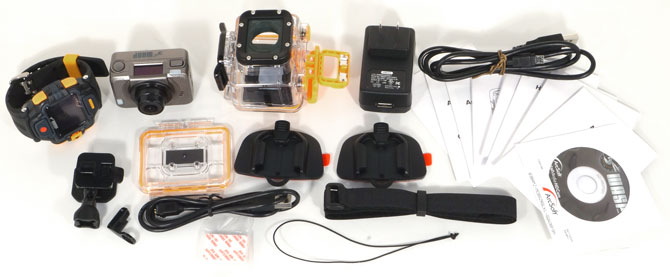
The included battery has a capacity of 1130 mAh, which allows for continuous video recording for 110 minutes in 720 60p mode.

The camera's interfaces and connectors are located on two sides of the body: a microphone input and a USB port on the left, a Mini-HDMI output and a memory card slot on the right. Let us once again pay attention to the presence of a microphone input - this is a rare case in the world of miniature cameras.
Finally, something tasty: a remote control, including one that plays the role of an electronic clock with a timer. Lasting plastic case with a thick rubber strap, tight buttons for taking photos, starting recording and navigating through the device’s service menu. Connector PoGo pin USB square cross-section, which serves to recharge the gadget, is protected by a rubber plug with an additional lock that prevents the plug from being tilted and, accordingly, moisture from entering.
|
|
Information is displayed on a 1.29″ diagonal OLED color display. You won’t see rich shades and deep blacks here, and the size of the pixels is such that you can easily distinguish them even at arm’s length.
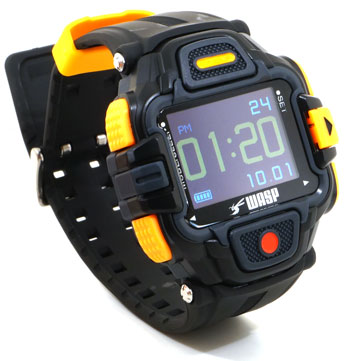
However, here, in addition to scant text information, live video broadcast from the camera can be displayed. Like this:
The guaranteed range of this remote control is 2 meters, according to the official specifications. However, in practice, the distance at which the image continues to be transmitted from the camera to the remote watch is 5-6 meters.
Simple settings allow you to set the current date and time on the remote clock, set up sound alerts (built-in beeper), change the color of the symbols, activate automatic display shutdown, and connect several more similar Wasp cameras.
|
|
Basic specifications The action cameras compared are shown in the following table:
| AEE MagiCam S70 | GoPro Hero 3 BE | WaspCam Gideon | |
| Image sensor | CMOS 1/4″ 16 MP | CMOS 1/2.3″ 12 MP | 1/2.33″ 16.37 MP |
| Dimensions, W×H×D | 62×43×36 mm | 59×41×29 mm | 59×43×44 mm |
| Weight |
|
|
|
| Battery capacity, battery life |
up to 125 minutes of continuous video recording in 720 60p mode | up to 84 minutes of continuous video recording in 720 60p mode | up to 110 minutes of continuous video recording in 720 60p mode |
| Carrier | microSD memory card | ||
| Interfaces |
|
|
|
| Other characteristics |
|
|
|
Video/photography
First of all, let's look at viewing angles. We will not determine them with an accuracy of a degree - this technical information can also be found in the documentation. The first two cameras - AEE MagiCam S70 and GoPro Hero 3 BE - allow you to change the angle from which you shoot (although you need to be careful here, there is a catch that not every user is aware of). AEE MagiCam S70 has four viewing angle presets: Broad, Medium, Narrow and Small. GoPro Hero 3 BE is limited to only three presets - Wide, Medium, and Narrow. Unlike these cameras, WaspCam Gideon almost always shoots at the same angle, which is most likely optimal. “Almost” - because changing the viewing angle becomes possible only in 1080 30p mode.

This mode, due to the insufficiently high frame rate, is unlikely to be of interest to action operators, so we will assume that the Wasp camera always shoots with the same viewing angle (however, we will keep in mind the ability to change the viewing angle - for cases when shooting static frames is required , and high frequency is not needed).
All wide-angle action cameras have a characteristic fish-eye optical distortion that makes the image appear to be stretched onto a sphere. But what is important is that the nature and degree of these distortions, that is, the “diameter of the sphere,” is different for all cameras. Below are still frames from videos shot with cameras with the maximum possible viewing angle and a frame rate of 60 frames per second.
| AEE MagiCam S70 | GoPro Hero 3 BE | WaspCam Gideon |
|
|
|
As you can see, when shooting in open space, the difference in coverage is quite insignificant. Now appreciate this difference when shooting close objects:

No, no, the WaspCam camera was located at exactly the same distance from the test table during shooting as the other two cameras. The difference in coverage is due to the aforementioned different degrees of “spherization” of the image.
By the way, the cameras carried out almost all testing in their boxes, mounted side by side on metal plate. Which, in turn, was attached to a tripod.

Now let's evaluate the benefits of the so-called change in viewing angle in the first two cameras. Why so called? Yes, because this change - as you might guess - does not occur by shifting the lenses, as in zoom lenses, but through ordinary software cropping of the frame - the so-called crop ( English crop). With subsequent, again programmatic, stretching of the resulting crop to the size of the full frame. It is clear that the video quality with this method of zooming cannot remain the same - the detail will invariably deteriorate. It all depends on a competent resizing algorithm. Let's clarify: we're talking about about the AEE camera.
In the case of GoPro, there is an assumption that here the change in viewing angle is not so trivial, but through the use of different sizes matrices, fortunately this camera can shoot 4K video. The following table shows 100% portions of still frames taken from videos that were shot with different angles view (in the case of Wasp, this angle is the only one available). Full still frames can be seen by clicking.
| AEE MagiCam S70 | GoPro Hero 3 BE | WaspCam Gideon |
| Broad | Wide | Default angle |
|
|
|
| Medium | Medium | |
|
|
|
| Narrow | Narrow | |
|
|
|
| Small | ||
|
Using the AEE camera as an example, you can see the practical uselessness of such a software zoom - details are not added at all, which is no wonder. But GoPro pleased me. Here, most likely, it really wasn’t possible without changing the scanning area of the matrix, although a very careful resize is not excluded - you can see some gradation on the inclined lines (which, in turn, can also be explained by the method of removing information from the matrix by skipping (thinning) lines ). The resolution of the GoPro, which shoots in Full HD mode with a minimum viewing angle, is almost equal to that of the Wasp camera. However, determining the resolution is done a little differently - for this you need to completely fill the frame with a test table. For obvious reasons, we don’t have a table with such dimensions (an approximate calculation shows that a “sheet” with a diagonal of several meters will be required), so we determine the camera resolution by shooting one fragment of the table, the key one. Subsequently, this fragment is superimposed in a video editor on the Full HD resolution table, resulting in the following results:
| AEE MagiCam S70 | GoPro Hero 3 BE | WaspCam Gideon |
|
|
|
There are two clear leaders here - GoPro and Wasp. With GoPro everything is clear - this camera shoots 4K video, it’s a shame not to have high resolution. But Wasp... It's nice to see a Full HD camera that has a resolution of a thousand TV lines.
We have decided on viewing angles and resolution; The next step is to select the format in which to conduct the test comparison survey. Different cameras have a different selection of formats - here the record holder for their number is, of course, GoPro. However, in all three cameras, fortunately, two formats were available, completely identical in their key parameters:
- 1920x1080 60p - Full HD, high frame rate
- 1280x720 120p - double frame rate
In addition to the fact that the video parameters in these modes are the same, these formats are also the most popular in real use - those in which these cameras should be filmed. The most preferable format seems to be 1920x1080 60p - here the frame size is good and the frequency is more than satisfactory. Thus, all the following videos will be shot in this format, and with the widest possible viewing angle.
|
||
| AEE MagiCam S70 | GoPro Hero 3 BE | WaspCam Gideon |
| 1920x1080 60p | ||
|
|
|
| download video | download video | download video |
| 1280×720 120p | ||
|
|
|
| download video | download video | download video |
Comparing still images taken from Full HD video, you first of all pay attention to the work of GoPro: the picture is virtually impeccable in quality. Clean, sharp, without the artifacts that are noticeable in footage from an AEE camera. At the same time, there is a certain “cartoony” quality in the frame from the Wasp camera, as if the color correction of the frame was entrusted to some retoucher. Care is also noticeable here color range V lilac shade- an obvious error in the operation of auto white balance. This is a purely software defect that can be corrected in future firmware versions of the device.
But in the 1280x720 120p mode, it’s not clear who to give preference to. On the one hand, in WaspCam shooting there are no obvious “ladders” or “steps” that other cameras use to indicate inclined lines (look at electric wires). But, on the other hand, Wasp encodes moving objects with noticeable artifacts. It feels like there is no bitrate left for the intermediate P- and B-frames, as if almost all the bitrate is spent on key frames.
Before making a final verdict on which camera shoots better, you should study these test videos in a little more detail. Namely, look into their properties.
Now we understand the reasons for the appearance of “cartoonishness” and artifacts in the Wasp chamber. The encoding profile is where the rub lies. Unlike AEE and GoPro cameras, the Wasp camera encodes the stream with a profile Main, while opponents use a “blue-ray” profile High, potentially providing more high quality. In addition, the maximum bitrate in the Wasp camera is set too low, to only 20 Mbit/s, which may (and does) not be enough to effectively encode scenes with a lot of movement in the frame.
However, one should not forget about one important feature, which distinguishes photography from video. No one ever, with rare exceptions (like us now, for example), watches a video by pausing it. And in motion, these listed shortcomings are extremely difficult to notice. If possible at all.
The cameras being compared are equipped with CMOS matrices, which means that when shooting there is a certain manifestation of the effect called “rolling shutter” (for more details, see the material Rolling shutter in video shooting - description of the defect, examples, explanations). Knowing, however, that modern devices use fairly fast matrices, we hope that the degree of rolling shutter will be negligible. You can check this by taking our trio for a ride in an electric car, which provides the necessary degree of random shaking.

To view in larger size click Original size button
That's right, rolling shutter is almost undetectable in all three cameras. This is seriously encouraging: finally, action cameras have stopped looking like slow smartphone cameras.
Let's now evaluate the cameras' ability to capture details with slight movement in the frame. Walking - it, of course, bears little resemblance to action, but nevertheless...
To view in a larger size, click the Original size button
You can check out the full-size still images in the following table; they are available by clicking on the thumbnail.
|
||
| AEE MagiCam S70 | GoPro Hero 3 BE | WaspCam Gideon |
|
|
|
All three cameras do a pretty good job here. Except that instead of foliage, the AEE camera turns out to be a kind of daub - this is the encoder’s fault. At the same time, the Wasp camera again made a mistake with the white balance. Well, as far as it becomes clear, this flaw is a proprietary feature of the camera. We promise not to mention it in the future, even though it will be difficult.
Cycling provides much more active movement in frame. Let's take a look at how our cameras cope with this task.
But let's move from simple to complex. Shooting during the day in bright light doesn't require much intelligence. But how will the cameras behave in low light conditions? It is known that the miniature optics that our cameras are equipped with are not able to transmit enough light for the matrix to capture something intelligible. Again, the joint work of several factors is important here, from automatic exposure to software gain, as well as software noise reduction.
To view in a larger size, click the Original size button
| AEE MagiCam S70 | GoPro Hero 3 BE | WaspCam Gideon | ||||||||||||||||||
|
|
|
| AEE MagiCam S70 | GoPro Hero 3 BE The first two cameras - AEE and GoPro - output the same type of signal via HDMI: a live video stream with service icons and other information superimposed on top of it, displaying the current state of the camera. The service menu is also displayed on an external monitor. The exception to this is the Wasp camera. Here, unfortunately, there is no possibility of direct output of the video stream: when connecting any display device to the camera via HDMI, the device automatically switches to the playback mode previously removed material, that is, into player mode. Disconnecting the HDMI cable will automatically turn off the camera.
Thus, you cannot use an external monitor with the Wasp camera, as, for example, we did earlier with the GoPro camera:
Here it is necessary to clarify this unclear issue. It is known that trade and customs regulations different countries or their unions differ significantly. For example, an unpleasant pattern has been noticed: cameras officially sold in Russia cannot output a pure full-size video stream via HDMI, while video cameras can, and all of them, without exception (action cameras are not video cameras). Changing the functionality of cameras is theoretically not difficult; it is enough to reflash the device with the required firmware, if it exists (however, in this case the local warranty is lost). This is where the final question comes in: if Wasp becomes officially supplied to Russia, will the camera have the ability to output a pure video stream via HDMI? In addition to the built-in software, current cameras can also operate under external control, which is carried out through mobile devices and, accordingly, specific applications. Finding these applications is usually not difficult, at least by the name of the camera. Below are screenshots of these applications.
Let us briefly describe the operation of this software. Applications designed to control AEE and GoPro cameras are rich in their settings, while the Wasp camera application only has settings for video resolution and photo size. However, the latter application differs favorably from the first two in that it has virtually no delay in transmitting the video stream from the camera to the smartphone. The longest delay was noted, oddly enough, in the GoPro App - it reaches two to three seconds, which is not suitable for live broadcasting. At the same time, the AEE camera application suffers from one significant limitation: during video recording, transmitting the video stream to the smartphone is impossible, although the smartphone and camera remain connected. As for the communication range, that is, the power of the wireless camera adapters, it is approximately the same. All three cameras can operate under the control of a smartphone at a distance of up to 50-60 meters from it. But this, firstly, depends on the smartphone itself, and secondly, the communication range can be affected by reasons such as the presence of obstacles between the camera and the smartphone, underwater photography, the presence of others Wi-Fi networks etc. conclusionsWhat are the main features of the compared cameras? It seems that their list is unlikely to be significantly different, even if the preferences of readers vary greatly.
Which of the listed advantages or disadvantages have the greatest or least weight? It is impossible to give a direct answer, since all this, as already mentioned, entirely depends on the preferences of the individual user. Someone needs the correct white balance and high detail with high compression quality - there’s nowhere without a GoPro. And some are filming in a poorly lit gym or in a dark underwater kingdom, where only WaspCam can provide good detail. Well, some people don’t think about high matters at all, because the main thing is an interesting plot and more active movement. Widget from SocialMart In contact with Classmates |




